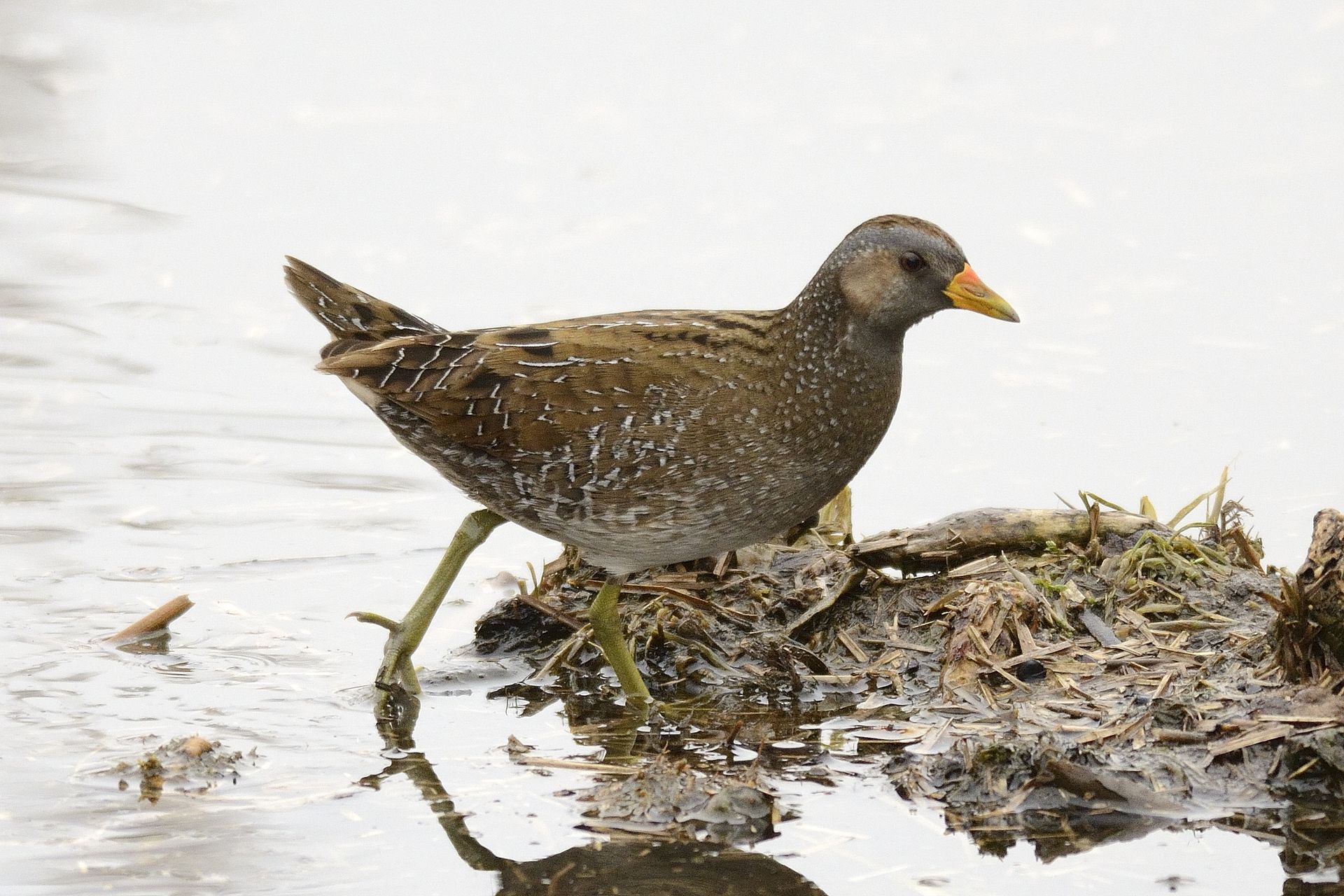Spotted Crake (Porzana porzana)
Measurements: 22-24cm long.
The Spotted Crake returns invisibly to its breeding grounds in Europe between March and May each year, migrating at night and disappearing by dawn into damp vegetation. But it soon betrays its presence by the male’s loud, distinctive song. Resembling a whiplash, the “whit, whit” notes are repeated at about one second intervals, often for minutes on end. They are heard from dusk, at intervals throughout the night, and at dawn.

By Noel Reynolds – Spotted crake (Porzana porzana), CC BY 2.0, https://commons.wikimedia.org/w/index.php?curid=45201023
One of several small rails with short bills found in Europe, this one occupies subtly different habitats to the others. In general it avoids reedbeds, occurring instead in thickets of sedge, rush, iris and even tall grasses. It benefits most when conditions lead to a variety of water levels being found in a small area, allowing it forage on dry mud, wet mud and water up to 7cm deep without moving far.
In general this species takes only small food items, but a wide spectrum. Animals include worms, snails, insect larvae and small fish, whilst plants include algae, shoots and seeds – this species has the distinction of being able to run the heads of grasses through its bill to get at the latter, which other crakes appear not to do.
Males and females form a monogamous pair-bond lasting only for a season, although two broods may result. The birds leave their breeding areas in July and August, and most winter in sub-Saharan Africa.
